
Patagonia Wildlife
Patagonia is home to an array of amazing wildlife. We work with hand-picked local wildlife guides to help you experience the region's nature at its finest.
Discover MoreDeep roots in Patagonia: We are ex-guides, tour leaders, outdoor enthusiasts, & adventurers.
We’ve got our feet on the ground: Impartial advice, a bespoke service, and at no extra cost.
For the ends of the Earth: Sustainability is more than our carbon footprint (but we’re reducing that too).
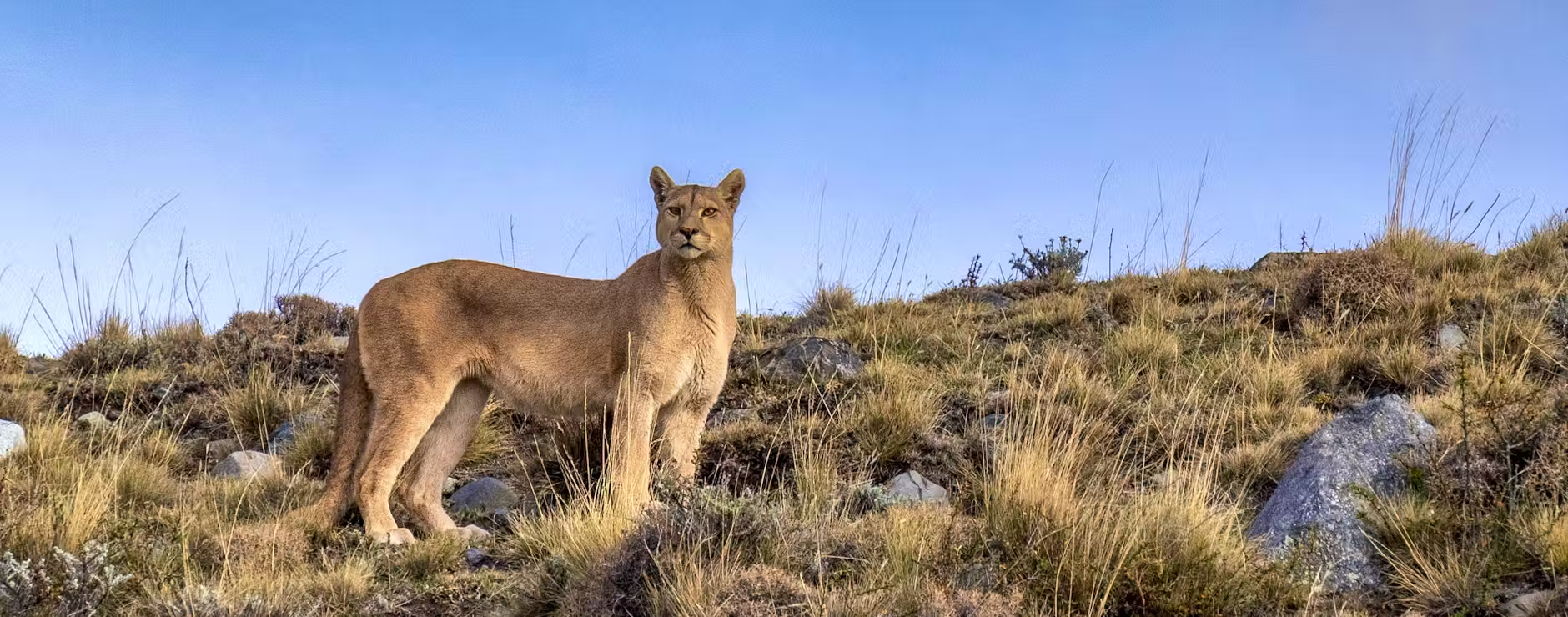
Torres del Paine’s mountains and plains offer a spectacular backdrop for some incredible wildlife encounters. This is a place where you can go puma tracking and watch condors on the wing, as well as being a short hop away from penguin and whale encounters along the Chilean coast.
Powerful and elusive, pumas are Torres del Paine’s most iconic animal, and seeing one is a highlight of any trip.
While pumas tend to steer away from the areas with the most popular hiking trails, there’s always a chance of seeing them when hiking off the beaten track or transferring between different parts of the park. To increase your chances, it’s best to join a dedicated puma tracking trip led by a naturalist guide. Encountering them while learning about their behaviour and ecology is a truly amazing experience.
Many guides rate winter as one of the best times to see pumas, when they come down from the high slopes to hunt and are more easily spotted against the snow.
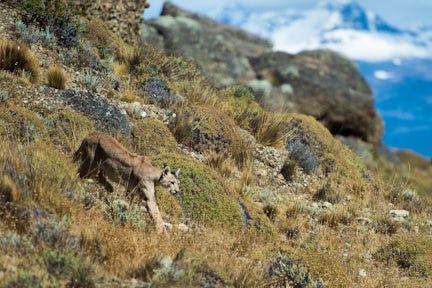
Puma in Torres del Paine
Native to South America, the guanaco is the wild relation of the llama, and can be found extensively across the Torres del Paine region. They are a common sight when out hiking.
The elegant camelids stand just over three feet (one metre) at the shoulder. Their herds usually consist of several females and their young, plus a single dominant male. Other male guanacos gather in bachelor herds.
Before the arrival of Europeans, guanacos were once hunted by Torres del Paine's indigenous Tehuelche inhabitants for meat and leather. Today, their only natural predators are pumas – guanacos make up the majority of their diet.
Want to know more about pumas and guanacos in the park?
Swoop Patagonia Expert Danny
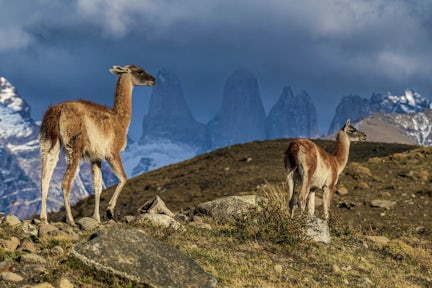
Guanacos in front of the Towers
Watching condors flying above the Paine Massif is about as classic a Patagonian experience as it’s possible to have.
With a wingspan of up to 10.5 feet (3.2 m), the condor is the largest bird of prey in the world – only the ocean-going albatrosses beat it for size. While their population numbers have been declining across South America as a whole in recent years, in Torres del Paine condors are thriving, thanks to a healthy puma population leaving plenty of guanaco carrion for them to eat.
You're most likely to see them soaring around the highest cliff faces in the park, but up close experiences are better in the late evening when they come home to roost. Take a dedicated trip to a lookout point to view these magnificent birds at close range.
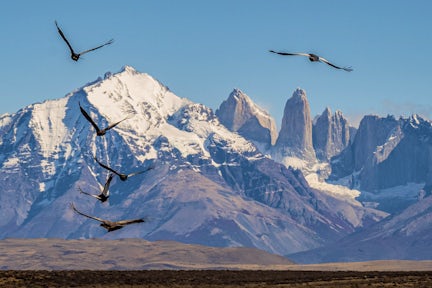
Andean condors at Torres del Paine
The huemul deer is Chile’s national animal. Critically endangered and easily spooked, the skittish Huemul deer is a rare sighting in Torres del Paine. With stocky builds and unusually large ears, they're well suited to life in the Patagonian wilderness, and are always on the lookout for danger.
Most sightings have been in the west of the National Park; in areas off-the-beaten-track, where the trails are quietest and you can take your time looking out for them: spotting one is often a matter of luck, but it's a magical moment when it happens.
Active monitoring and conservation programmes are in place to try to increase huemul deer numbers up in the park and the surrounding areas.
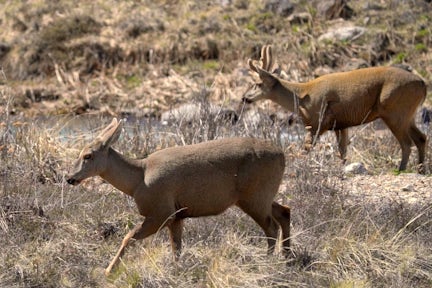
A pair of huemul deer
There is plenty of wildlife in Torres del Paine beyond its most headline-grabbing species, and time with a local guide can really help you appreciate the smaller mammals and bird you might encounter.
One of the most commonly encountered small mammals is the culpeo, a type of fox that follows in the wake of pumas, scavenging for food. Skunks and armadillos can also be seen, though they are less active in the daytime.
There are around 105 species of bird in Torres del Paine. Look out for the nandu, or rhea, in the eastern part of the park, a South American ostrich. On the waterways, there are black necked swans and Patagonian flamingos, while the park’s forests are home to the cachaña, or Austral parrot.

Culpeo fox
There's so much amazing nature surrounding Torres del Paine, that it's easy to pass it by on your way to the national park. But here lie some of the region's most extraordinary wildlife, with the chance to build on your trip by adding in whale watching, penguin encounters and more.
Head out from Torres del Paine’s gateway city of Punta Arenas and there’s the opportunity to visit two very special penguin colonies.
The first is the king penguin colony at the unfortunately-named Useless Bay, which can be visited on a day trip by small plane or an overnight ferry trip. This is the only place that king penguins breed outside the Subantarctic. The king penguin’s unusual breeding cycle means there is usually a good chance of seeing fluffy chicks.
Closer to Punta Arenas is a colony of around 120,000 Magellanic penguins, which have made their home on Isla Magdalena, where they nest in burrows. In summer, take a day or half-day trip by boat from Punta Arenas to walk among them on the island.
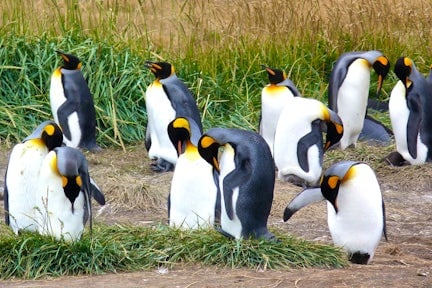
King penguins in Tierra del Fuego
Punta Arenas is a superb whale watching destination, but its location puts it in prime place to see humpback whales. Between December and March you can make a day trip to the rich waters of nearby Francisco Coloane Marine Park, Chile's largest marine reserve, where you can watch humpbacks feeding and breaching against a spectacular mountain backdrop.
For a truly unmatched experience, it’s also possible to extend your trip and spend two nights at an ecocamp research base run by local marine biologists. Here, you can spend time recording wildlife with scientists, exploring the fjords while you look for whales, dolphins, sea lions, Magellanic penguins and more.
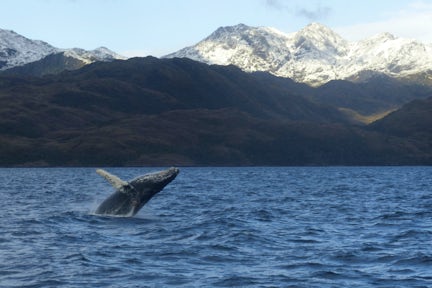
Humpback whale in Francisco Coloane Marine Park
On a wildlife watching trip around the Chilean Fjords or Magellan Strait, you can sail or kayak with huge pods of Austral and Commerson's dolphins.
With the stunning wilderness landscape in the background, watching these playful creatures leap out of the water will bring a smile to anyone's face. Commerson's dolphins especially are incredibly active and fast-paced swimmers, but given that can can be found in pods of up to a hundred individuals, spotting them won't usually be a problem.
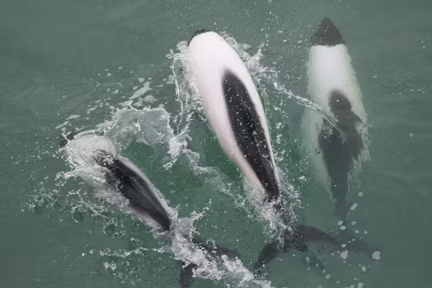
Sail from Punta Arenas to Isla Marta, home to over 1,000 noisy, burly sea lions. They can grow up to 3 metres in length, males can weigh up to 800 lbs, and they're not afraid to push their weight around on land. Much more graceful in the water and very inquisitive, they're curious enough to swim up and around the boat to get to know you a bit better.
If you want to see as much as possible in one trip, double up your wildlife spotting and see sea lions in the Chilean Fjiords on a whale watching trip.
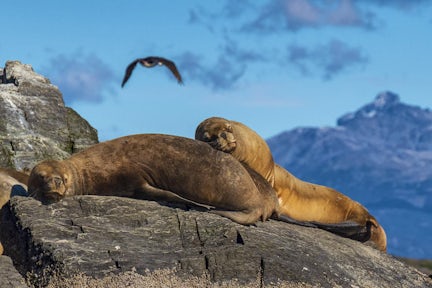
Wildlife in Torres del Paine trips scored 4.1/5 from 56 reviews
In addition to pumas, we saw gray fox, caracara, guanacos, eagles, hares, armadillo, kestrels, condors, rheas, sheep… Much more to this experience than pumas. The towers are also amazing. My wife and I got excited every time we saw them. Read the full review
Travelled: March 2025
Jeffrey Albrecht II - USA
Simply the best and most diverse bird populations I have encountered including the Andean Condor. Guanacos in herds, fox everywhere (dozens), Hares (rabbits), Darwin Rhea’s in substantial numbers, and of course Pumas. Read the full review
Travelled: December 2024
Roger Pascoe - USA
What was your most memorable moment? Seeing a mother puma with 3 cubs. Read the full review
Travelled: October 2024
Shelley Giberson - USA
Highlights: spending time with a mother puma and her cubs at sunset and sunrise, walking a trail with a puma after the first snowfall of the season. Read the full review
Travelled: April 2022
Maddie Emberson - Canada
Having a mother puma and her 2 cubs walking 20 feet from us ❤️❤️❤️❤️ Read the full review
Travelled: April 2022
Eike Traina - USA
What was our most memorable moment? Seeing a puma in the wild. Read the full review
Travelled: February 2022
José Olivares - USA
We saw many foxes, rabbits, condores and other birds. Read the full review
Travelled: December 2017
Craig Hobin - Brazil

Patagonia is home to an array of amazing wildlife. We work with hand-picked local wildlife guides to help you experience the region's nature at its finest.
Discover More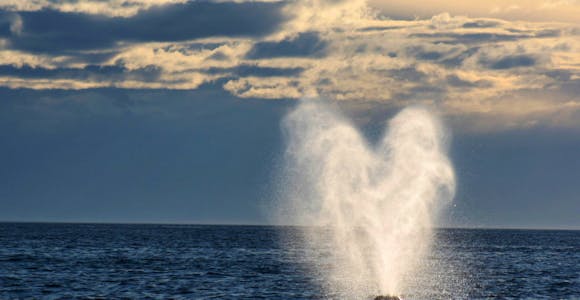
Peninsula Valdés is the number one destination for wildlife in Patagonia. This UNESCO World Heritage Site is one of the most important areas for southern right whales. With …
Discover More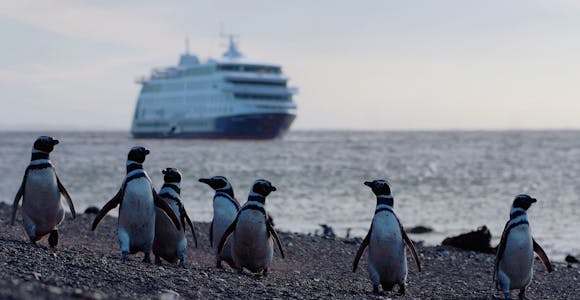
Both Patagonia’s Atlantic and Pacific coasts are teeming with wildlife, and the best way to put yourself in the action is by taking the water on an adventure cruise ship or a …
Discover More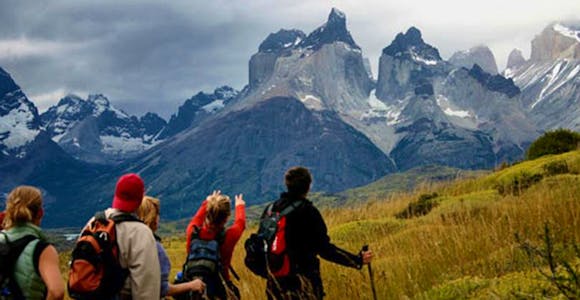
World class hiking and trekking awaits in Torres del Paine National Park. From the iconic W Trek to the park’s most hidden corners, each valley, peak and pass is a treasure.
Discover MoreWe'll spend some time listening to your aspirations, then discuss the kind of experience that might suit you.
Next we'll discuss the options, shortlist the best trips for you and present you our impartial recommendations.
We'll place a 24 hour hold on your preferred option - without obligation - whilst we talk through the details.
Whatever your budget, group size, length of stay, preferred activity or appetite for adventure, we can help.
1 888 970 4571This website uses cookies to ensure you get the best experience on our website. Privacy policy